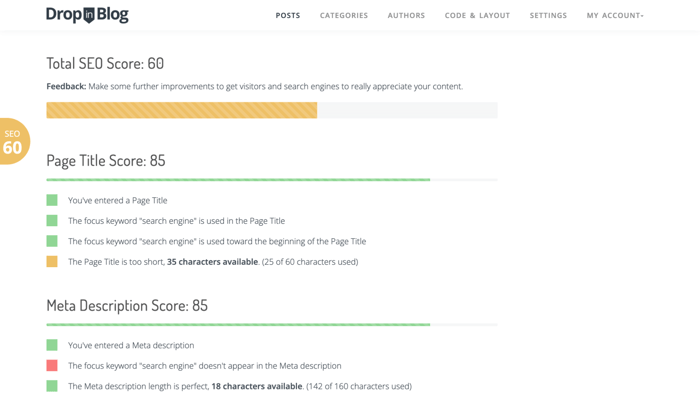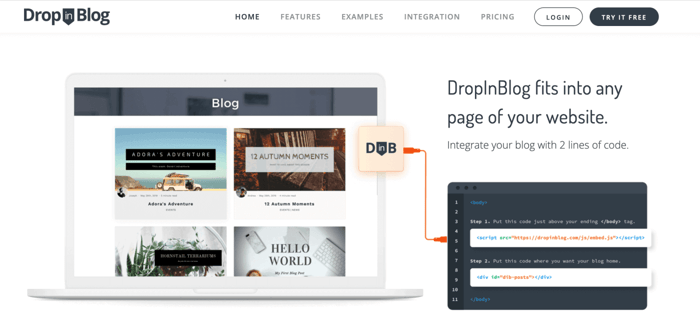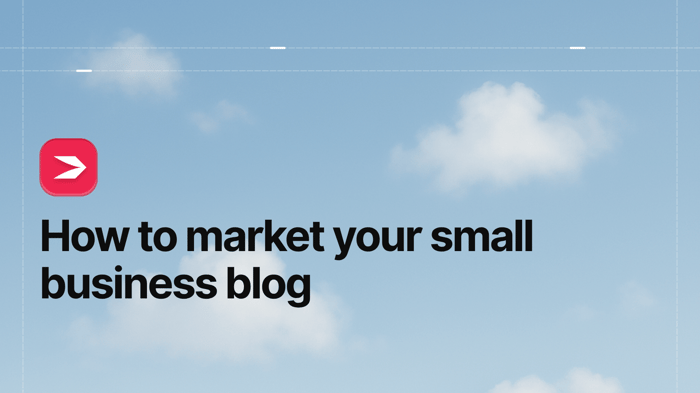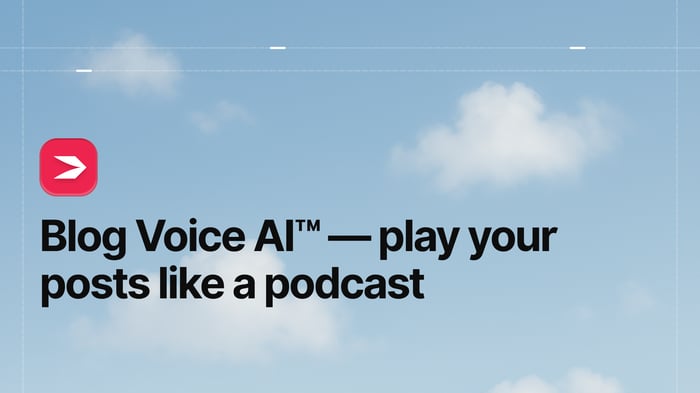As a small business owner, it’s likely you’ll be restricted to a fairly tight budget for marketing. But don’t despair – it’s possible to market your business effectively, even when limited by resources. In such cases, a small business blog is the way to go.
Blogging is a particularly cost-effective marketing tool that many businesses, including small businesses, leverage in order to maximize sales. But how do you blog to market your small business effectively? We’ll run through everything you need to know.
Table of Contents
The Foundations
As with many things, when starting a business blog, it’s important to lay the foundations correctly and do your homework. In order to avoid wasting precious time, you need to stay focused on your goals. A little bit of brainstorming is required to lock in what your objectives and marketing goals are, as well as the niche you’re going to blog about. Once you are set in your purpose and topic area, you’ll be able to progress.
The next element involved in getting started is understanding your target audience. You won’t be efficient in grabbing their attention and encouraging sales if you don’t know the best ways to connect with them. Who are your target audience? What is the age range or gender? What platforms are they using most frequently, and what drives their purchasing decisions?
These are all questions that will help you build an effective blogging strategy.
Develop a Blogging Strategy
When you have a deep understanding of your target audience, you can build your blogging strategy. As you’re competing against other similar businesses, you need to look at what they’re doing and where they’re having success. Your research will show you which keywords they’re ranking for and potentially where there are some gaps that you can take advantage of.
Doing a competitor analysis and researching your audience will help you come up with blog post ideas. This list of topics will hit the mark in terms of what your audience wants to read and will hopefully rank well. From the topics, you can move into keyword research to find the best keywords to target for search volume and low competition.
Finally, you need to commit to a content calendar. Decide how often you’ll be publishing new content and consider seasonality. For example, you may have blog posts about Christmas gift ideas and would like to publish those in the weeks leading up to Christmas.
Choose a Blogging Platform
In some ways, your blog will only be as good as the platform you choose to blog with. If your blogging platform doesn’t give you the ability to implement all the possible SEO options, then you could be limited in your ability to beat the competition. Choose the best blogging platform – DropInBlog. DropInBlog gives you all the options, and as an extra bonus, it’s easy to use.
With DropInBlog, you can optimize your content by adding meta tags, image alt text, internal links, and schema markup, which is automatically added. The platform also has a built-in SEO Analyzer tool, which scans your content as you type and gives you recommendations for improvement.
You can easily make the adjustments, and that’s all there is to getting perfectly optimized content every time.

It doesn’t matter which website builder or e-commerce platform your store is built on because DropInBlog is platform-agnostic. This means it can integrate with almost anything, and it’s super easy to do so.
You can create and manage all your content from the DropInBlog dashboard, and your published posts will automatically appear on your website in the location of your choice – no reformatting required. You can sign up today and get free trial access while you learn the ropes and explore the potential DropInBlog has to offer.

How to Create Great Content
Great content is always what readers are looking for. Again, if you’ve done your research into your target audience and trending topics, and if you genuinely want your blog to be a good resource to readers, you’ll hit the mark just fine. Be mindful to create content that is helpful, answers the readers' questions, and is unique – don’t be scared to add a bit of your own personal flair.
Getting a reader's attention is the first challenge, and a killer headline will help you do that. Craft a headline that is direct and to the point, but not clickbait. Using a number in the headline is good, as well as power words, and it should include your target keyword.
When it comes to structuring your blog post, always structure it with readability in mind. Break up paragraphs with subheadings and use bulleted lists where possible. Images also help to visually break up the page and help to keep the reader engaged.
Limit the use of difficult words or complex sentences – shorter sentences and paragraphs are easier to process and will ultimately keep your readers engaged and on the page for longer.
Another thing that will help to keep your readers on the page longer is accurate spelling and grammar. Edit your content carefully before publishing, as readers who encounter spelling and grammatical mistakes are more likely to think that the blog is not credible.
Don’t Neglect SEO
By this point, you’ve already done so well that it’d be a shame to neglect SEO for your small business blog. First of all, there is both on-page and technical SEO to consider.
On-Page SEO
On-page SEO includes things like keywords, meta tags, image alt text, and internal linking. Make sure you’ve made use of your target keyword throughout the post, but that you’ve used it naturally. “Keyword stuffing” will not do you any favors.
Always include a meta title and meta description to help search engines understand your content. This also acts as a snippet of detail promoting your content to potential readers, so if it’s interesting enough, they’ll click; if not, you won’t get the site traffic. Another way to get bonus points, so to say, is to add alt text to your images. This is another way your content can be found by search engines.
Placing internal links throughout your content helps with crawling and indexing your site. Adding internal links is very easy to do and can give your site SEO a big helping hand.
Technical SEO
The main factors to consider regarding technical SEO have to do with page loading speed. Pages that are bloated and heavy will load more slowly and result in some penalties from search engines. Not to mention the user experience on slow websites is poor and often leads to a high bounce rate.
The best thing you can do is compress images and remove any unnecessary code. Uncompressed images are far too large and generally the main culprit when it comes to slow page loading speed. Another thing that improves the user experience is mobile-friendly pages. If your pages are not responsive, you’ll lose people very quickly.
Finally, for an added boost to your site SEO, consider adding schema markup to your pages. Schema markup is a background language that search engines can process more easily. This also creates rich snippets in search results that are easier to scan and more attractive to users. SEO is all about improving your ranking on SERPs and getting more traffic.
Off-Page SEO
Off-page SEO refers to the various actions and strategies that are taken outside your website to improve its search engine rankings and overall online visibility. You could say that off-page SEO is better called relationship building. That’s because off-page SEO is all about social media engagement, interaction with community, and backlink building.
Focus on building relationships with other small business owners in your niche, either in person or virtually. You can gain backlinks to your site by guest posting, promoting content, or simply through your personal connection. Participating in community groups on social media and forum pages is another good way to establish your authority and reputation. But remember, the quality and relevance of off-page SEO efforts matter more than quantity. Always avoid low-quality backlinks and spammy tactics, as they can harm your rankings.
Share Your Content
Include a call to action like an email newsletter sign-up. It’s important to build a network of followers and regular readers, and this is one way to build an email list and stay connected with existing customers.
Unfortunately, doing all this is not enough to ensure success. There’s still another element missing and that’s sharing your content. Your business should have a presence across various social media platforms depending on your target audience. By sharing your new content on social media you open up a whole new scope of potential customers. Add social sharing buttons to your pages so that visitors can easily share their favorite content with friends and family.
Monitoring and Evaluation
Once you’ve engaged your blogging strategy and you’re blogging regularly, you need to be monitoring performance. If something is amiss you’ll be able to identify it and make changes.
No traffic increase or a lack of engagement on your blog are cause for concern. As is an increased bounce rate, which can be a result of things like slow page loading speed. If traffic hasn’t increased to your site, you’ll need to re-evaluate your SEO situation and your chosen keyword.
FAQs
What are the benefits of a blog for small businesses?
It can be hard for a small business to compete and market its product, typically because resources are scarce. However, blogging is a very cost-effective marketing tool that enables small business owners to increase their organic traffic and sales potential.
Final Thoughts
Blogging is an essential marketing tool for small businesses. It’s affordable, requires minimal resources, and has proven to be very effective. The process for setting up a small business blog doesn’t really differ from a large business, except that in order to stick within your budget, you need to have a clear plan.
Planning thoroughly in the beginning means you’ll stay focused and on track. You’ll be less likely to detour and invest time and energy into the wrong content. Having a methodical, almost scientific approach to SEO will help you achieve a high ranking on SERPs. Monitoring your site performance will help you to identify ineffective SEO elements and make changes sooner rather than later.
All in all, there’s a bit of work to get your blog off the ground. However, it’s a worthwhile investment – get it right, and your small business will thrive in no time.





